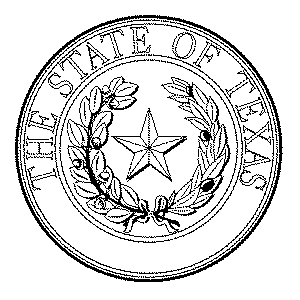katy beyer pv soundscapes 9/10/2009 the soundscape thought piece in the soundscape, r. murray schafer refers to hearing as one of o
Katy Beyer
PV Soundscapes
9/10/2009
The Soundscape Thought Piece
In The Soundscape, R. Murray Schafer refers to hearing as one of our
most intimate senses. Hearing is like “touching at a distance,” and
unlike most of our senses, it cannot be closed off (Schafer, 11)—sound
is persistent and immediate. The sound and the community are
interrelated as one shapes the other and vice versa; it is through
exploring and analyzing a soundscape that one figures out how the
interrelationship works and varies from place to place.
The notion of place is a human-constructed concept that involves
unique occurrences that separate that specific time-space from
another. Sound and music can produce place—sound is not just
encapsulated within a place but rather helps in the production of
place itself. Music making and the other keynotes, soundmarks, and
sonic ambience create an acoustic environment whose distinctiveness
creates a sense of place. And, while one sound may be loudest or most
prominent, the other sounds occurring are crucial and inherent in
creating a complete, one-of-a-kind soundscape. The person who sits in
a field just to listen to the wind, trees, and distant city sounds
during the day is going to consider it a different place than the
group of kids who go to that same field to jam on guitars at night.
Different sounds and different contexts create a unique sense of place
to the person experiencing it.
When a sound becomes schizophonic and is reproduced (and therefore
displaced from its original time, place, and context), the particular
feeling of space and place can become obsolete. Only specific sonic
events occurring in a specific context can undo these negative aspects
that can be caused by schizophonia.
Soundscapes are fluctuating and changeable—hour-to-hour, year-to-year,
the sounds of a given place are modified and reshaped. The changes
caused by birds migrating or a new urbanization plan show that the
sounds around us are not static and by looking at changing soundscapes
within a community, one is provided with an insight into how the
community itself is changing. When the Industrial Revolution started,
many urban soundscapes morphed as factories and machinery began to
operate. The keynotes of the pre-Industrial Revolution become even
less noticeable as they were replaced with the humming of lights, the
clanking of machinery, and cars (not necessarily a bad thing, contrary
to what Schafer may believe). As soundscapes change, one can see how a
community defines music, noise, and sound, and how these definitions
switch as new sounds get added into the environment. Preservation of a
certain soundscape, such as recreated “old”/colonial towns like Old
Sturbridge Village show the community’s desire to maintain a hi-fi,
unindustrialized soundscape, while an unpreserved, progressive town
(like Amherst, for example), shows the community’s willingness to
accept change and advancement at the risk of changing the soundscape
into something more lo-fi.
In the same vein, a changing soundscape tells us which sounds a person
or community finds enjoyable and which ones they find bothersome.
Adding a church bell to the center of a town may come off as noisy to
some and musical to others. The second appendix in Schafer’s The
Soundscape presents a graph that shows the percentages of liked vs.
disliked sounds in four different cities across the globe. In
Vancouver, Canada, animal sounds were found pleasant by 22% of those
tested and unpleasant by 16%. However, in Port Antonio, Jamaica, 100%
of people tested found animal sounds unpleasant. Construction sounds
weren’t found pleasant by any person tested in all four cities. In
this case, not only does the soundscape tell us what sounds are liked
and disliked, but also which ones are common and which ones are rare
in a given area.
When soundscapes are changed due to noise abatement policies, we are
able to see even further what sounds are not accepted and who/what in
the community has the power to continue to make certain sounds/noises.
This “sonic imperialism” reflects a community’s views on tradition,
authority, and control (Schafer, 77). While a church bell may be loud,
they are usually exempt from noise abatement because they carry a
sacred and traditional connotation. On the other hand, street criers
and musicians may face abatement because they lack respect and
authority. Noise abatement laws (in conjunction with busking licenses)
force a community to wonder who has the right to create or listen to
certain sounds. Changing soundscapes show the ways in which places and
personal interests are redefined—they act as a window into the
atmosphere of a given time.
Like analyzing a change in soundscape, the exploration and
documentation of a soundscape helps describe an environment and the
community that inhabits it. Taking note of the different sonic
occurrences that exist in a soundscape shows what kind of environment
it is (a lo-fi rural area vs a hi-fi urban area), what sounds are
appreciated and which are not, and what exists in the soundscape
(rivers, birds, factories, people, etc). In analyzing these sounds, we
can examine the relationship between the human and the sounds around
him. Moreover, by exploring different soundscapes we can begin to
implement changes that would help reduce noise pollution and promote
clairaudience.. Schafer believes that “music is an indicator of age”
(Schafer, 7)--the mood and style of a community’s music reflects the
way the community and its government are functioning. It is only
through defining and exploring a soundscape that we can gain this
insight. In short, soundscapes provide us with an aural depiction of a
given area. In addition, they give us insight into the way a community
functions—what they like, what they have, what’s changing, what’s
considered sacred, what is not allowed, and so on. Just like a
photograph of a landscape allows us to see all of the features and
elements of a given place, documenting a soundscape allows us to hear
the components of an environment.
Sources:
Schafer, R. Murray. The Soundscape. Rochester, VT: Destiny Books,
1977. Print.
 NAME CLASS DATE GRW 112 CONTINUED MAIN IDEAS 1
NAME CLASS DATE GRW 112 CONTINUED MAIN IDEAS 1 FORM 427—GENERAL INFORMATION (CERTIFICATE OF ABANDONMENT) THE ATTACHED FORM
FORM 427—GENERAL INFORMATION (CERTIFICATE OF ABANDONMENT) THE ATTACHED FORM INFORME SOBRE LA PROPUESTA DE ELIMINACIÓN DE LA SERIE
INFORME SOBRE LA PROPUESTA DE ELIMINACIÓN DE LA SERIE ZAŁĄCZNIK NR 4 DO REGULAMINU PRAKTYKI ZAWODOWEJ WYDZIAŁU
ZAŁĄCZNIK NR 4 DO REGULAMINU PRAKTYKI ZAWODOWEJ WYDZIAŁU ZAŁĄCZNIK 15 DO REGULAMINU WNIOSEK O UDZIELENIE PODSTAWOWEGO WSPARCIA
ZAŁĄCZNIK 15 DO REGULAMINU WNIOSEK O UDZIELENIE PODSTAWOWEGO WSPARCIA B OURBON DOLPHIN ETTERLATTES FOND POSTBOKS H MJØLSTADNESET 6099
B OURBON DOLPHIN ETTERLATTES FOND POSTBOKS H MJØLSTADNESET 6099 PTI 2 EKO TURIZEM – 2 DEL TURIZEM JE
PTI 2 EKO TURIZEM – 2 DEL TURIZEM JE LIBROS DE TEXTO CURSO 20192020 EDUCACIÓN INFANTIL CURSO MATERIA
LIBROS DE TEXTO CURSO 20192020 EDUCACIÓN INFANTIL CURSO MATERIA